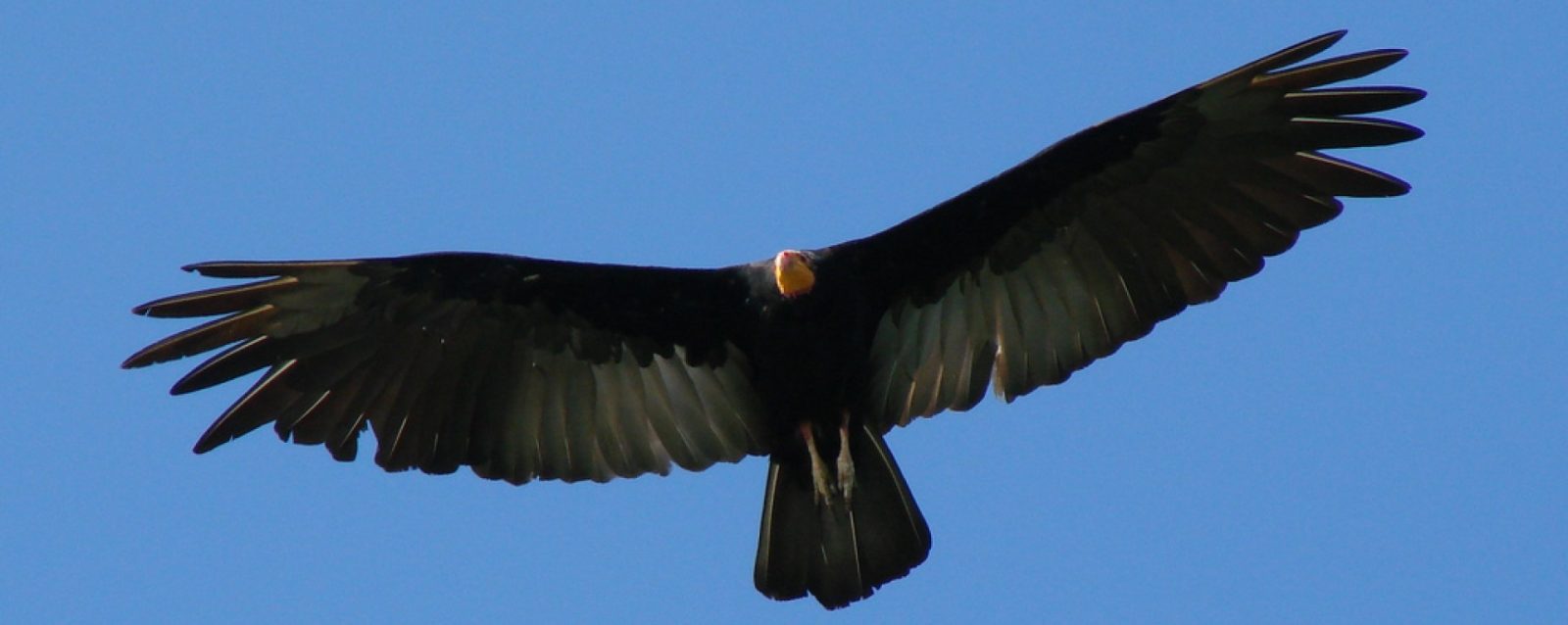
Greater yellow-headed vulture
 The greater yellow-headed vulture, also known as the forest vulture, is a species of bird in the New World vulture family Cathartidae. It was considered to be the same species as the lesser yellow-headed vulture until they were split in 1964. It is found in South America in tropical moist lowland forests. It is a fairly large bird, with a wingspan of 166–178 cm, a weight of 1.65 kilograms and a body length of 64–75 cm. The body plumage is black, and the head and neck, which are featherless, range in colour from deep yellow to pale orange. It lacks a syrinx, and its vocalizations are therefore limited to grunts or low hisses.
The greater yellow-headed vulture, also known as the forest vulture, is a species of bird in the New World vulture family Cathartidae. It was considered to be the same species as the lesser yellow-headed vulture until they were split in 1964. It is found in South America in tropical moist lowland forests. It is a fairly large bird, with a wingspan of 166–178 cm, a weight of 1.65 kilograms and a body length of 64–75 cm. The body plumage is black, and the head and neck, which are featherless, range in colour from deep yellow to pale orange. It lacks a syrinx, and its vocalizations are therefore limited to grunts or low hisses.
The greater yellow-headed vulture feeds on carrion and locates carcasses by sight and by smell, an ability which is rare in birds. It is dependent on larger vultures, such as the king vulture, to open the hides of larger animal carcasses, as its bill is not strong enough to do this. Like other New World vultures, the greater yellow-headed vulture utilizes thermals to stay aloft with minimal effort. It lays its eggs on flat surfaces, such as the floors of caves, or in the hollows of stumps. It feeds its young by regurgitation.
The greater yellow-headed vulture roosts on high, exposed dead trees to observe surrounding terrain. When flying, it travels in pairs or alone and is rarely found in groups. Flight is heavy and steady. It flies with its wings held flat or very slightly above horizontal, in what is called the dihedral position. The flight of the greater yellow-headed is an example of static soaring flight, which uses thermals to maintain altitude without the need to flap its wings. The greater yellow-headed vulture also has the unusual habit of urohidrosis, in which it urinates or defecates on its legs to cool them evaporatively. This behaviour is exhibited by storks and New World vultures.
They work well with King Vultures, and this species can smell, allowing it to find kills quickly, but the King vulture can rip into carcasses easier.
Another species where the range of possible population seems unreasonably wide, it is estimated to have a population between 100,000 and 1,000,000. Some evidence points to a declining population, but this is not yet significant enough to change its conservation status.










